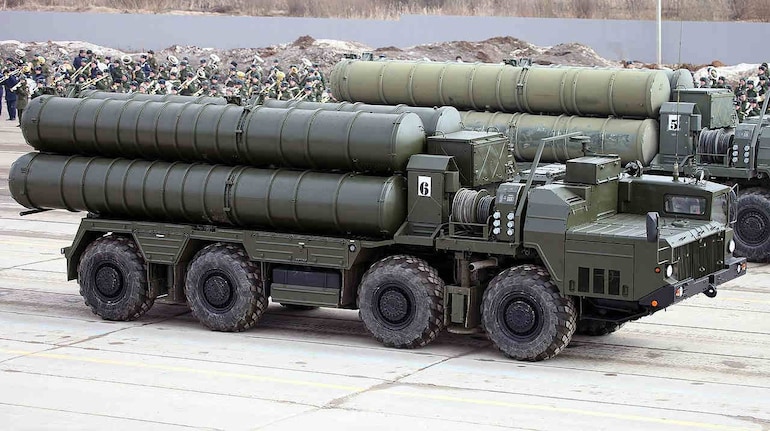



Across fields and dirt patches in Indian territory, lie the scattered remains of Pakistani missiles and drones, the flotsam from hard-fought aerial battles. According to the government, Pakistan has employed hundreds of drones as well as missile attacks in its confrontation with India.
Many of these drones were apparently brought down through a mix of kinetic and non-kinetic means. Indian air defences have also engaged targets with a variety of surface-to-air missiles (SAM) including Russian S-400 Triumfs, the Indian-made Akash, and Indo-Israeli Barak-8s.
India has the good fortune of wielding an effective shield in the skies. However, the country’s air defence challenges are set to increase dramatically in the coming years as China and Pakistan integrate new capabilities. Tackling these emerging threats will not only require continuous investments but also innovation and creative solutions.
Building the Shield
‘Air defence’ is a catch-all term that covers a wide range of systems meant to counter all manner of aerial targets. These can be small drones flying a few hundred feet above the ground or ballistic missiles re-entering the Earth's atmosphere from outer space. They can gently whir at speeds as low as 75 kilometres per hour or rocket through the atmosphere at more than five times the speed of sound. In between these extremes are the combat aircraft, cruise missiles and helicopters that have been the main targets of air defences for decades.
Air defences have to detect, identify and engage these targets. Detection depends on a range of sensors, primarily fixed and mobile ground-based radars that can track hundreds of targets. In the coming years, India will also deploy airborne early warning aircraft that will enhance these detection capabilities.
The next step is identification, which depends on characteristics like the aircraft’s radar signature, location, altitude and speed. Air defences have to distinguish friendly and civilian aircraft from those of adversaries and also identify what type of adversary aircraft they’re dealing with.
The final step is engaging the targets. Combat aircraft can engage the adversary with air-to-air missiles, including beyond visual range ones that can hit targets more than 40 kilometres away.
Enemy aircraft can also be targeted with surface-to-air missiles (SAMs). The smallest of these are shoulder-fired missiles like the Russian-made Igla, which is typically used to hit helicopters or low-flying drones. India is in the process of developing Very Short Range Air Defence Systems (VSHORADS) that will eventually replace Russian hardware. These are supplemented by anti-aircraft (AA) guns. While AA guns predate the missile age, India has upgraded some like Bofors L70s into drone killers. The upgraded L70s employ electro-optical sensors to track targets and fire shells programmed to explode into a cloud of fragments once they’re close enough.
Thereafter, India’s multi-layered air defences feature SAMs of progressively greater ranges. The Israeli SPYDER systems feature two complementary missiles that can strike targets 9-16 kilometres away. India’s own tried-and tested Akash missile (30 km range) will be supplemented soon by the Quick Reaction SAM.
Beyond this, the Indo-Israeli Barak-8 missile can cover aircraft and missiles 70 kilometres away, while the formidable Russian S-400 system features multiple missiles that can engage different types of targets at ranges of 40-400 km.
The Quiet Revolution
By acquiring advanced systems and simultaneously producing at scale domestically, India has steadily built air defences that can absorb and inflict punishing attrition over prolonged combat. It has also focused on protecting key targets. For instance, India has ambitions of covering Delhi and Mumbai with a limited ballistic missile defence (BMD) shield that can intercept accidental or rogue launches of some nuclear-capable ballistic missiles.
Over the last few years, India has also started putting together a capable Counter-Unmanned Aerial Systems (C-UAS) to tackle small drones that are used to either probe and destroy air defences or as ‘grey zone’ tools in times other than war.
Perhaps as significant as these developments has been organisational streamlining. The IAF’s Integrated Air Command & Control System (IACCS) has steadily grown and matured, bringing together data from IAF and civilian radars to build a fuller picture of the air defence environment. The Indian Army’s Akashteer air defence systems are also being integrated with the IACCS in a win for interservices cooperation.
The Perils Ahead
Recent successes for India’s air defences are hardly cause for complacency. Ongoing wars in Europe and West Asia have highlighted some of the enormous challenges the country is likely to face. One, drones and other expendable munitions are likely to saturate the air space, jamming and attacking radars or simply infiltrating past them. Tackling them will require both new types of sensors (such as acoustic or electro-optical ones) as well as creative ways of bringing them down inexpensively, whether by jamming, spoofing, employing machine guns and automatic cannons, or through newer means such as directed energy weapons.
Two, we’re likely to see the proliferation of supersonic and hypersonic cruise missiles. Tracking and intercepting them may require overhauls or wholesale replacement of some existing air defences.
Three, India’s two principal adversaries are going to wield stealth aircraft, in particular the Chinese J-20, J-35, and J-36 aircraft. India will need to develop or acquire new radars as well as other sensors to detect them.
Through the last century, air defences have experienced profound changes every few decades, and the laggards have been punished for falling behind. It is for India to ensure it is not among them.
Discover the latest Business News, Sensex, and Nifty updates. Obtain Personal Finance insights, tax queries, and expert opinions on Moneycontrol or download the Moneycontrol App to stay updated!
Find the best of Al News in one place, specially curated for you every weekend.
Stay on top of the latest tech trends and biggest startup news.